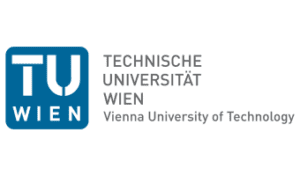Driving Operational Efficiency and Cost Reduction
Unveiling the Benefits of Circular Business Models Operational efficiency and cost reduction are paramount for businesses striving to thrive in today’s fiercely competitive landscape. This compelling article delves into the remarkable benefits that circular business models offer in driving operational efficiency and cost reduction. Driving operational efficiency through circular business models not only supports sustainable growth but also provides a significant competitive advantage by enabling organizations to adapt, innovate, and outperform their rivals over the long term. Achieving operational efficiency can be critical in competitive markets as it empowers companies to offer high-quality products and services at lower prices while maintaining or increasing profitability. By embracing circularity, organisations can optimise resource utilisation, minimise waste, and unlock novel revenue streams.
Through the implementation of innovative strategies like product life extension, remanufacturing, and collaborative consumption, businesses can streamline operations, cut costs, and enhance overall competitiveness, all while pursuing operational excellence as a core objective of adopting circular business models. Operational efficiency is making the most out of available resources such as time, people, equipment, inventory, and money to deliver products or services in a profitable way. Achieving operational efficiency directly contributes to improved business performance by boosting productivity and optimizing key performance metrics. This article explores the transformative potential of circular business models, spotlighting their ability to generate sustainable value while simultaneously fostering operational efficiency, cost-effectiveness, and a culture of continuous improvement.
Optimizing Resource Utilization for Operational Efficiency
Circular business models prioritise the efficient utilisation of resources, enabling organisations to maximise operational efficiency through process improvement and optimised resource utilization. By adopting strategies such as recycling, upcycling, and resource recovery, businesses can minimise waste and reduce reliance on virgin resources. Rethinking product design and production processes to incorporate principles like modularity, standardisation, and reusability empowers organisations to optimise resource allocation, improve resource utilization, and minimise material waste across the value chain. Using process mapping to analyse current processes helps identify opportunities for efficient production processes and supports continuous process improvement initiatives. Process mapping helps organizations identify areas for improvement in workflows. By closing the loop and extending product life cycles through refurbishment, repair, and remanufacturing, organisations can significantly curtail resource consumption, decrease raw material costs, and mitigate environmental impacts by reviewing current processes to identify areas for improvement.
Minimizing Costs and Waste for Cost Savings
Circular business models offer substantial cost reduction opportunities by minimising waste. By reducing wastage in operations, companies can deliver the same products at a lower cost, which means more profit. Process automation and automating processes can help minimize operational expenses and lower costs by reducing reliance on manual, time-consuming activities. By transitioning from a linear “take-make-dispose” model to a circular approach, businesses can minimise costs associated with waste disposal, landfill fees, and resource inefficiency.
Embracing concepts such as waste prevention, designing products for longevity and recyclability, and efficient supply chain management allows organisations to streamline processes, eliminate unnecessary waste, and reduce overall production costs. Automation in these areas can significantly reduce manual tasks, manual effort, and data entry, further increasing efficiency and lowering the risk of human error. Automating repetitive tasks, regardless of the department, reduces manual labor, minimizes errors, and increases productivity.
By implementing reverse logistics systems and embracing circular supply chain practices, businesses can recover, repurpose, or recycle materials, resulting in cost reductions—including lower maintenance costs and energy consumption—and the creation of new revenue streams. Implementing standard operating procedures and quality control measures can improve service quality and output quality, while reducing human error and repetitive tasks. Consistent procedures ensure that all employees follow the same steps, which significantly improves productivity and reduces errors.
Optimising waste management practices not only drives cost savings and reduces administrative tasks, but also enhances environmental sustainability and bolsters the organisation’s reputation as a responsible corporate citizen. Energy efficiency measures can reduce operational costs for small and midsize businesses.
Unlocking New Revenue Streams
Circular business models provide organisations with opportunities to unlock new revenue streams through innovative practices. Unlocking new revenue streams supports future growth and improves profit margins by enabling businesses to reinvest in operations and maintain financial health.
By shifting from traditional ownership models to sharing, leasing, or service-based models, businesses can monetize the utilisation of their products throughout their life cycles. Collaborative consumption platforms enable organisations to extend the use of their assets, generate additional revenue, and reduce the need for continuous production, while also fostering strategic partnerships and enhancing business agility.
Remanufacturing and refurbishment services offer customers more affordable alternatives to new products while providing organisations with fresh revenue channels. These practices can also provide valuable insights and a competitive edge by revealing opportunities for process improvements and innovation.
Furthermore, organisations can explore opportunities for product take-back and recycling programs, creating value from the recovery and repurposing of materials. Professional services can play a key role in these initiatives by providing valuable insights to inform strategic initiatives and optimise program effectiveness.
By diversifying revenue streams and embracing circularity, businesses can enhance financial resilience, increase profitability, and contribute to a more sustainable economy.
Enhancing Supply Chain Efficiency
Circular business models drive improvements in supply chain efficiency, with project management and management software serving as essential tools for enhancing supply chain processes, resulting in cost reductions and enhanced operational performance. By collaborating closely with suppliers, implementing shared-value partnerships, and adopting circular procurement practices, organisations can optimise resource flows, maximise resource utilization, minimize transportation costs, and improve overall supply chain resilience. Embracing digital technologies and data analytics, along with software solutions that provide real time data and break down data silos, enables organisations to improve efficiency, gain insights into supply chain operations, identify areas for optimization, and enhance inventory management. Optimizing inventory management and ensuring resource availability are key strategies for improving operational efficiency and supporting business continuity. By prioritising transparency and traceability, businesses can mitigate supply chain risks, ensure responsible sourcing, and meet the increasing consumer demand for sustainability. Performance measurement should include key performance indicators, project performance metrics, and industry benchmarks to accurately measure operational efficiency, output quality, and progress toward goals. Effective collaboration across business functions, with a focus on employee productivity, employee engagement, empowering employees, and reducing employee turnover, is critical for driving operational efficiency. The importance of process improvements, process optimization, and improving processes cannot be overstated, as these are fundamental for achieving operational efficiency and maximizing productivity. Streamlining supply chain processes not only reduces costs, achieving lower cost and efficient operations, but also improves overall operational efficiency, agility, and responsiveness to market demands. In this context, operations management, work life balance, and understanding what operational efficiency means are vital for building supply chain agility and responsiveness.























































































































0 Comments